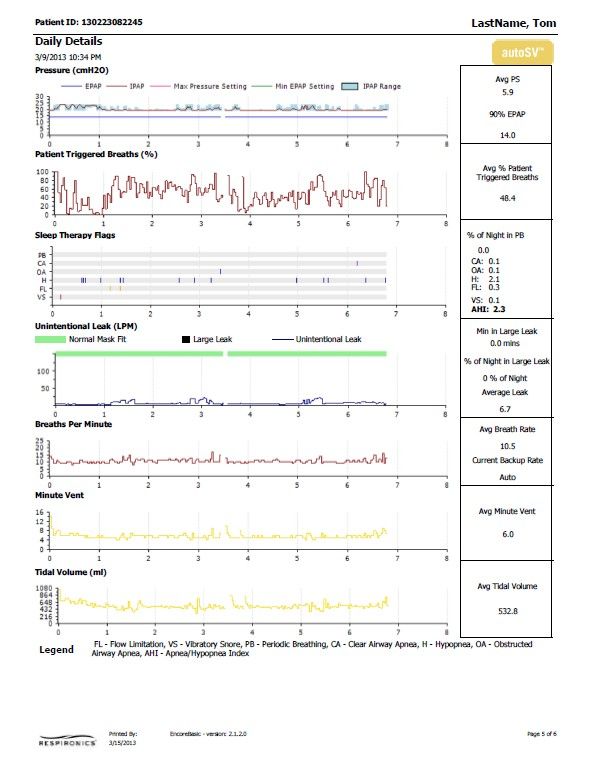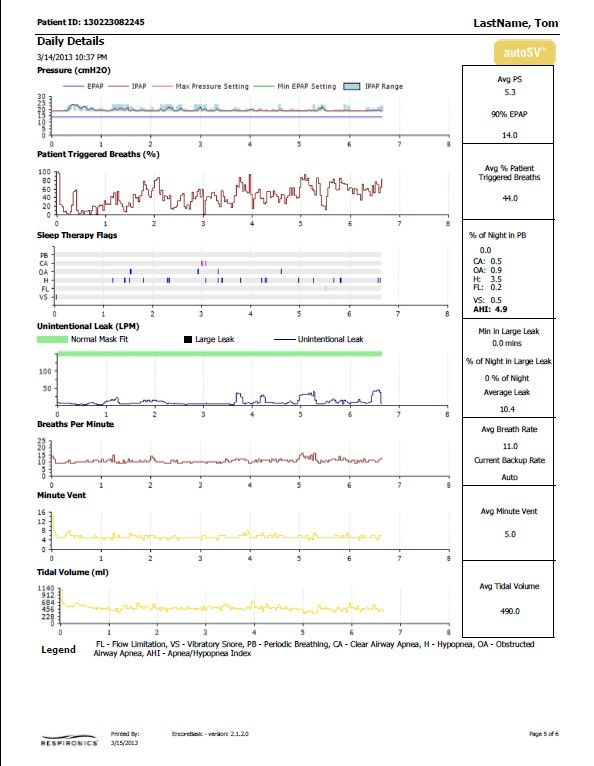Old64mb gave you sound advice about not rushing through trials at any new setting(s). And when you think about it, the more variability one presents in nightly AHI, the more important that advice becomes. But high night-to-night variability also makes it hard for a single-night PSG to yield spot-on ASV settings.tomma wrote: You'd think after having a study done, with that type of machine, they'd at least get close.
A comment about pesky hypopneas... Obstructive hypopneas can be tackled with EPAP or PS, whereas central hypopneas should be tackled with PS. PSG studies often don't/can't differentiate obstructive hypopneas from central hypopneas. But PS increases usually work for either hypopnea type. That's mainly why titration protocols employ PS increases for undifferentiated hypopneas. A few CompSAS patients tend to present more central instability to fixed BiLevel compared to fixed CPAP. Those patients in particular theoretically fare better tackling their entire obstructive component---hypopneas and all---using EPAP rather than PS. Additionally, those patients are the ones who tend to fare better setting PS Min to 0cm, thus running their ASV machine with CPAP as base modality. Most CompSAS patients, however, seem to fare better setting PS Min to 3cm or higher, hence running their ASV machine with BiLevel as base modality. Both base-modality scenarios allow for timely and proportionate PS increases to address central undershoot---using the PS Min through PS Max range.
Good luck.










